How to Hide Columns in Excel – 6 Ways With Easy Steps
For decades, Excel has been a go-to tool for organizing and analyzing data. But when spreadsheets get cluttered, hiding columns lets you focus on what matters without losing important information. This guide walks you through simple, practical ways to hide (and unhide) columns in Excel—perfect for beginners and casual users.
Table of Contents:
Table of contents

Below, we’ll break down six easy methods to hide columns in Excel, whether you’re working with one column or dozens.
Hide Columns in Excel Using the Context Menu
The simplest way to hide columns is through Excel’s right-click menu. Here’s how:
For a Single Column
- Select the column: Click the letter at the top (e.g., “B” for column B).
- Right-click and choose Hide.
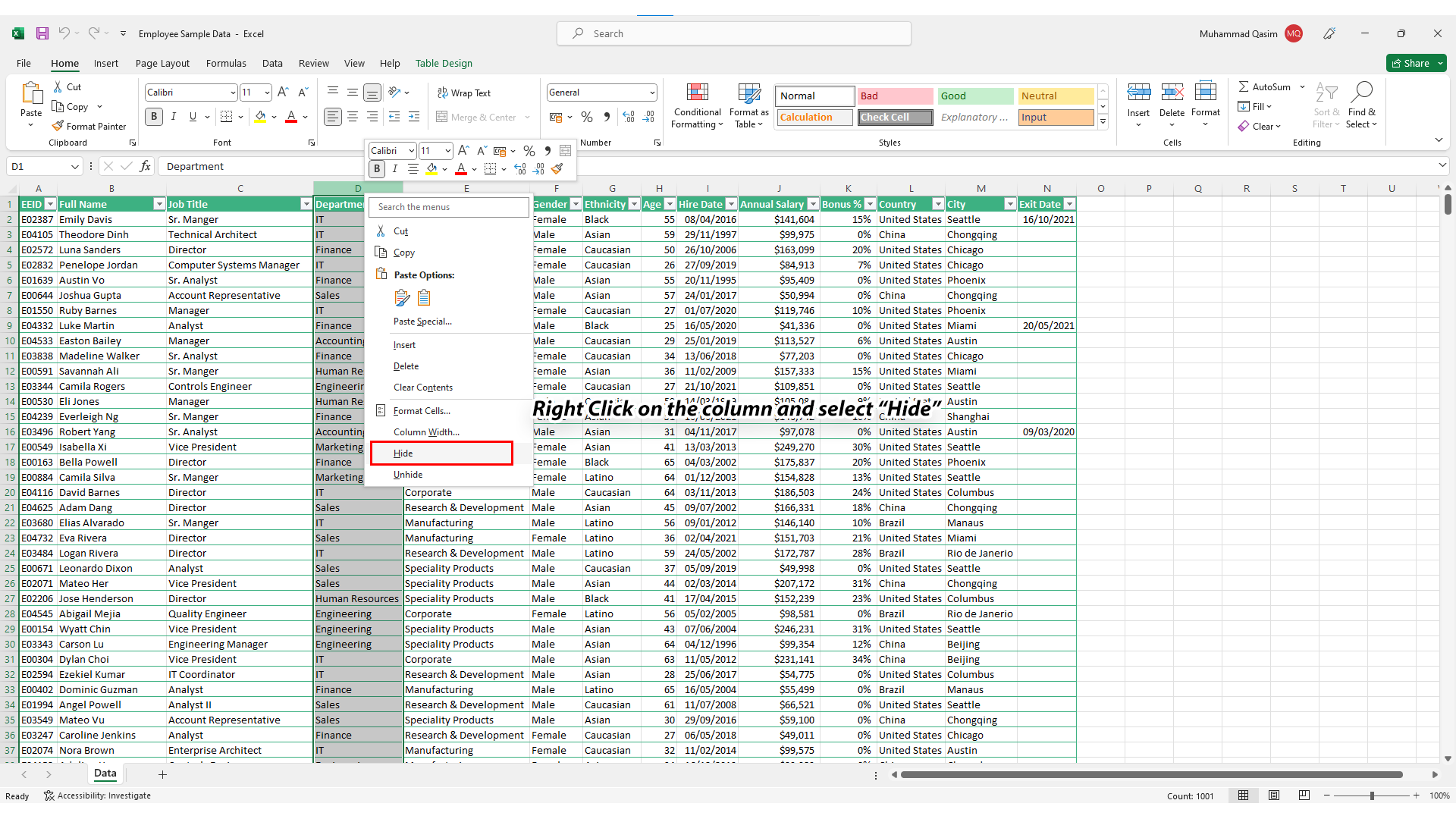
Hiding a column via the context menu - Check the indicator: A double line between columns confirms the hidden column. (Need to undo this? Jump to the “Unhide” section).
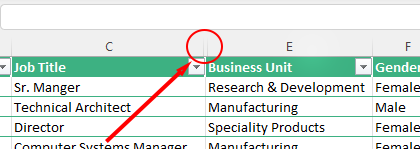
For Multiple Columns
- Adjacent columns: Click the first column letter, hold Shift, then click the last column letter.
- Non-adjacent columns: Hold Ctrl and click each column letter you want to hide.
- Right-click any selected column and choose Hide.
Note: Hidden columns aren’t deleted! They’re just tucked away temporarily, which is safer than permanently removing data.
Alternate Methods
If the right-click method isn’t your style, try these alternatives:
1. Using the Keyboard Shortcut
- Select your columns (single or multiple).
- Press Ctrl + 0 (zero).
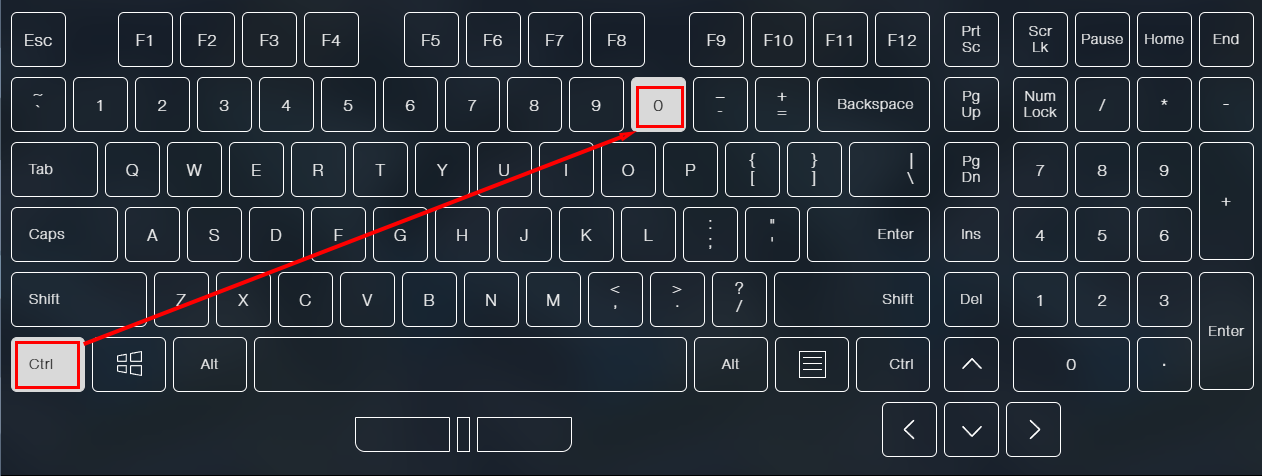
Keyboard shortcut for hiding columns
2. Using the Excel Ribbon
- Select your columns.
- Go to Home → Format → Hide & Unhide → Hide Columns.
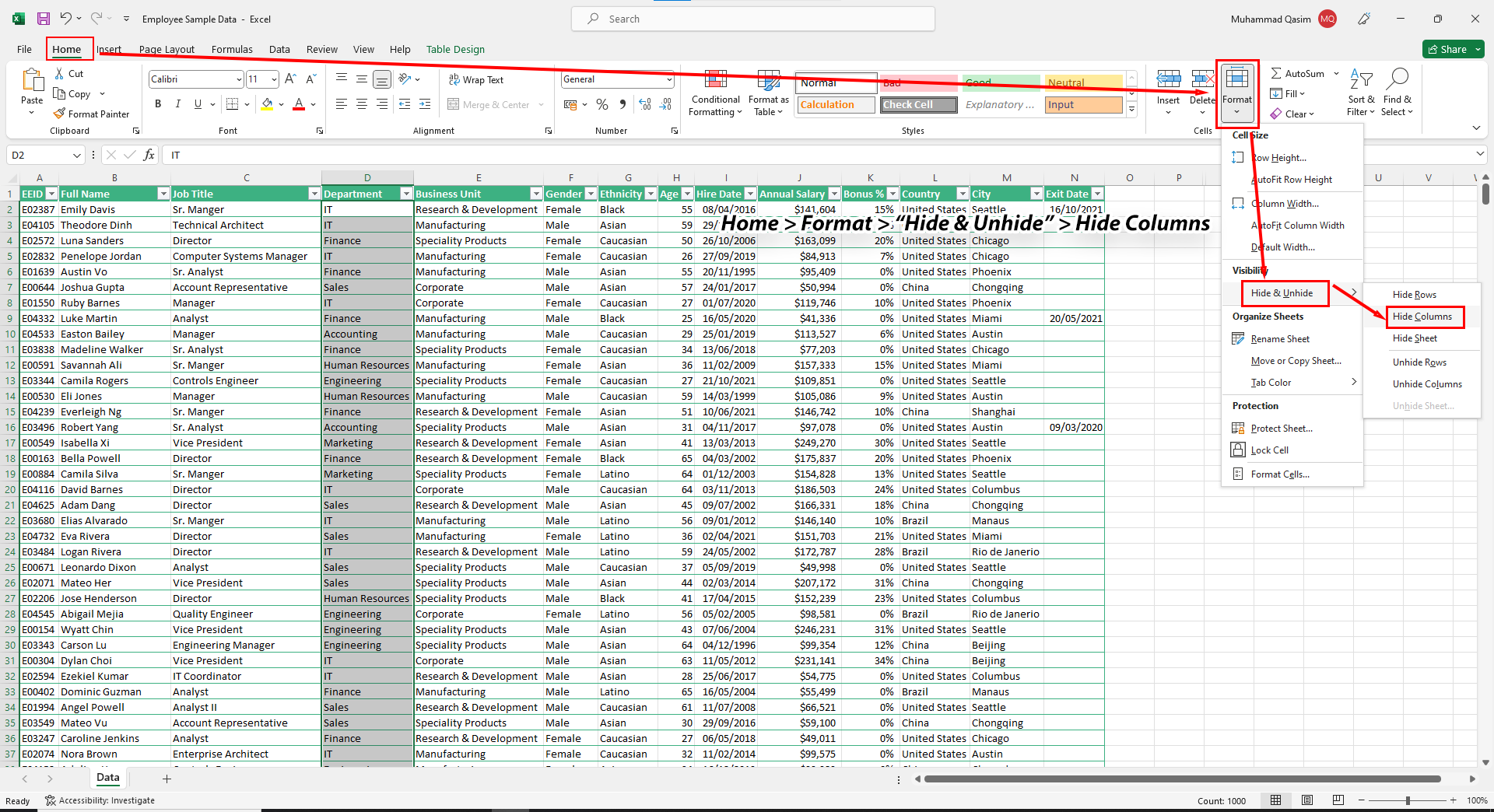
Hiding columns via the Excel Ribbon
3. Using Visual Basic for Applications (VBA)
For advanced users, VBA automates repetitive tasks. Here’s a quick script to hide columns:
- Open your sheet and press Alt + F11 to launch the VBA editor.
- Click Insert → Module.
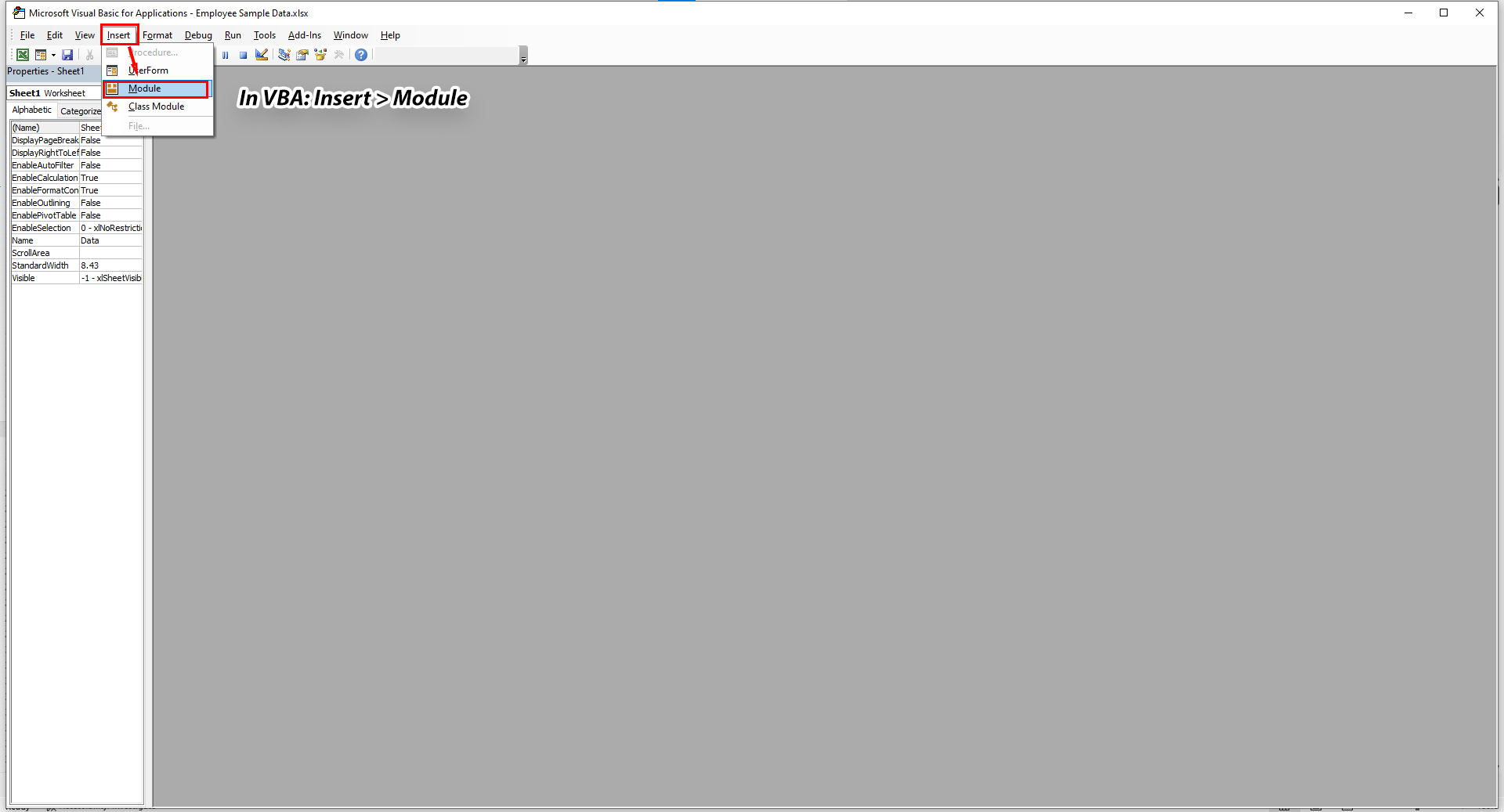
Adding a new module in VBA - Paste this code to hide columns A-C:
Sub Hide_Columns()
Columns("A:C").Hidden = True
End Sub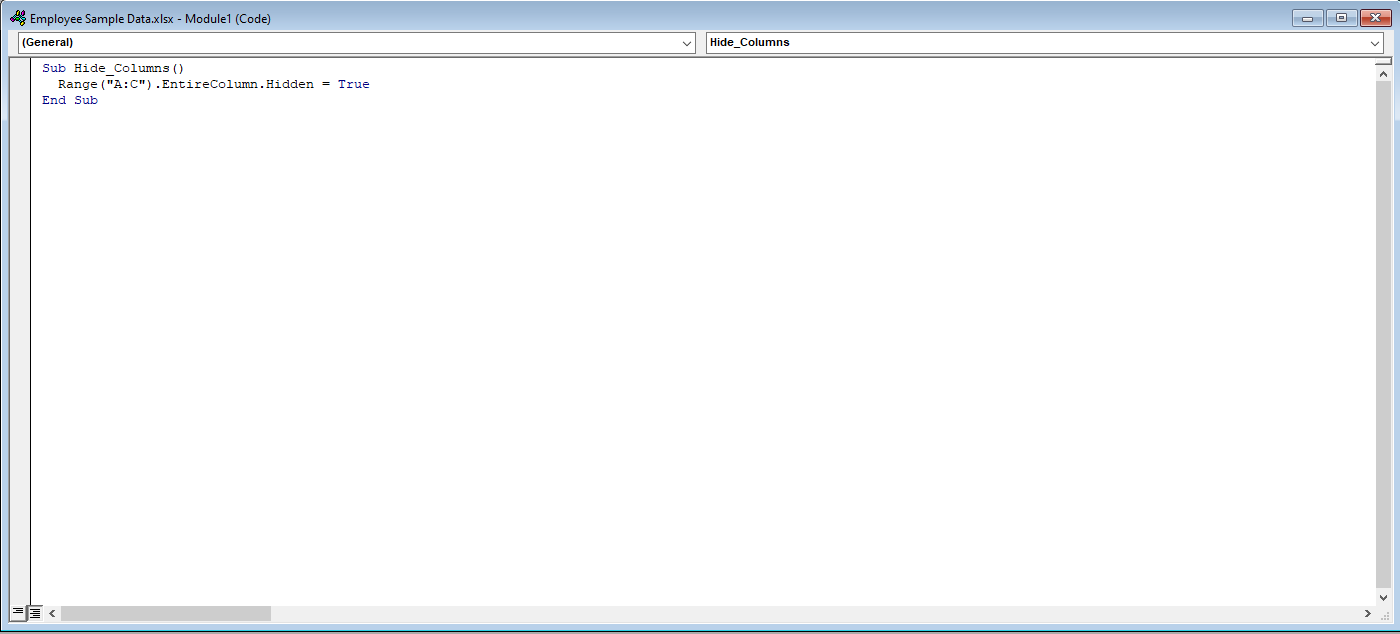
Sample VBA code for hiding columns - Press Alt + F8, select Hide_Columns, and click Run.

Executing the VBA macro
4. Using the Group Feature (Adjacent Columns)
Grouping lets you quickly toggle column visibility:
- Select adjacent columns.
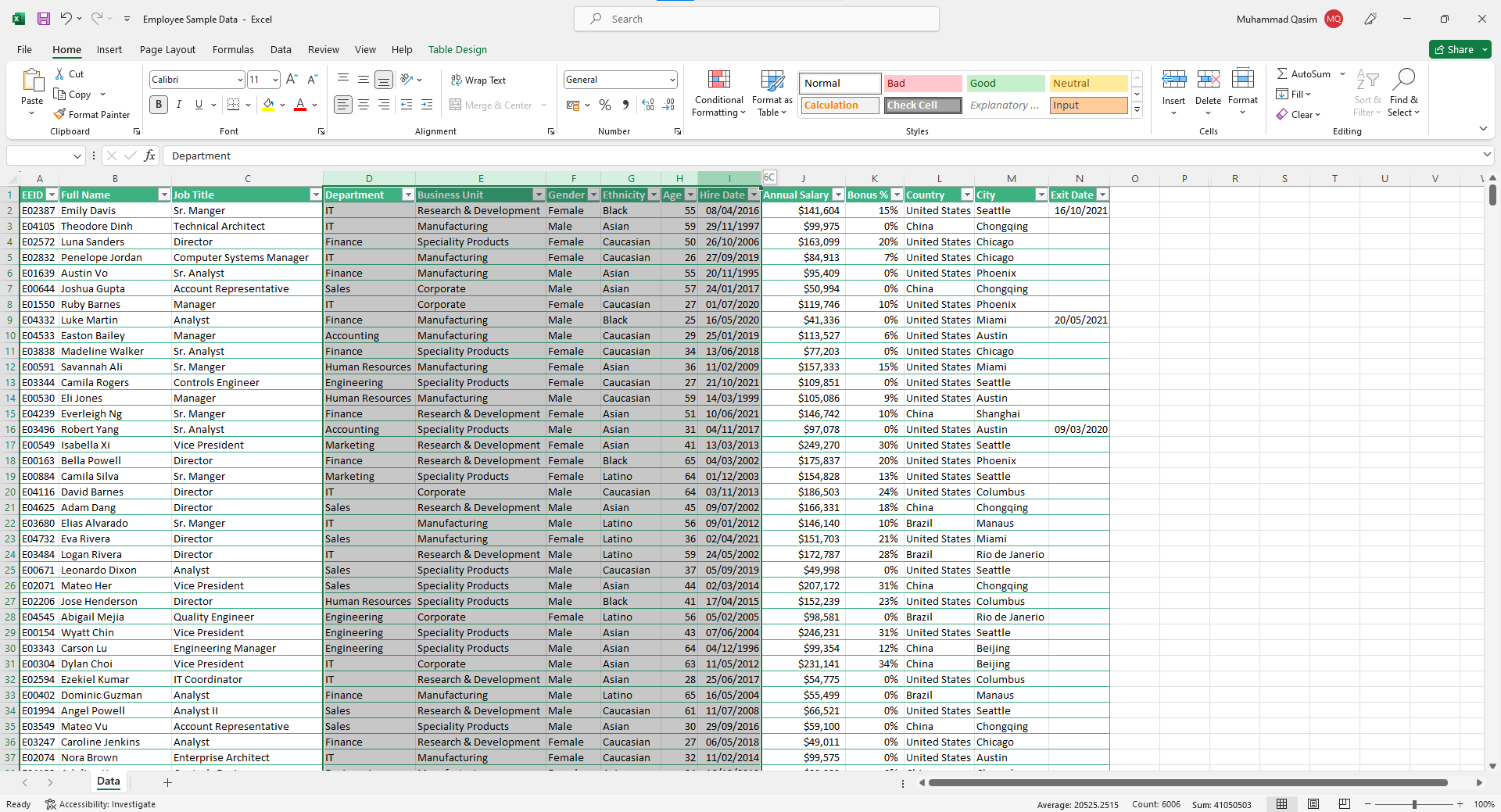
Selecting adjacent columns - Press Shift + Alt + Right Arrow to group them.
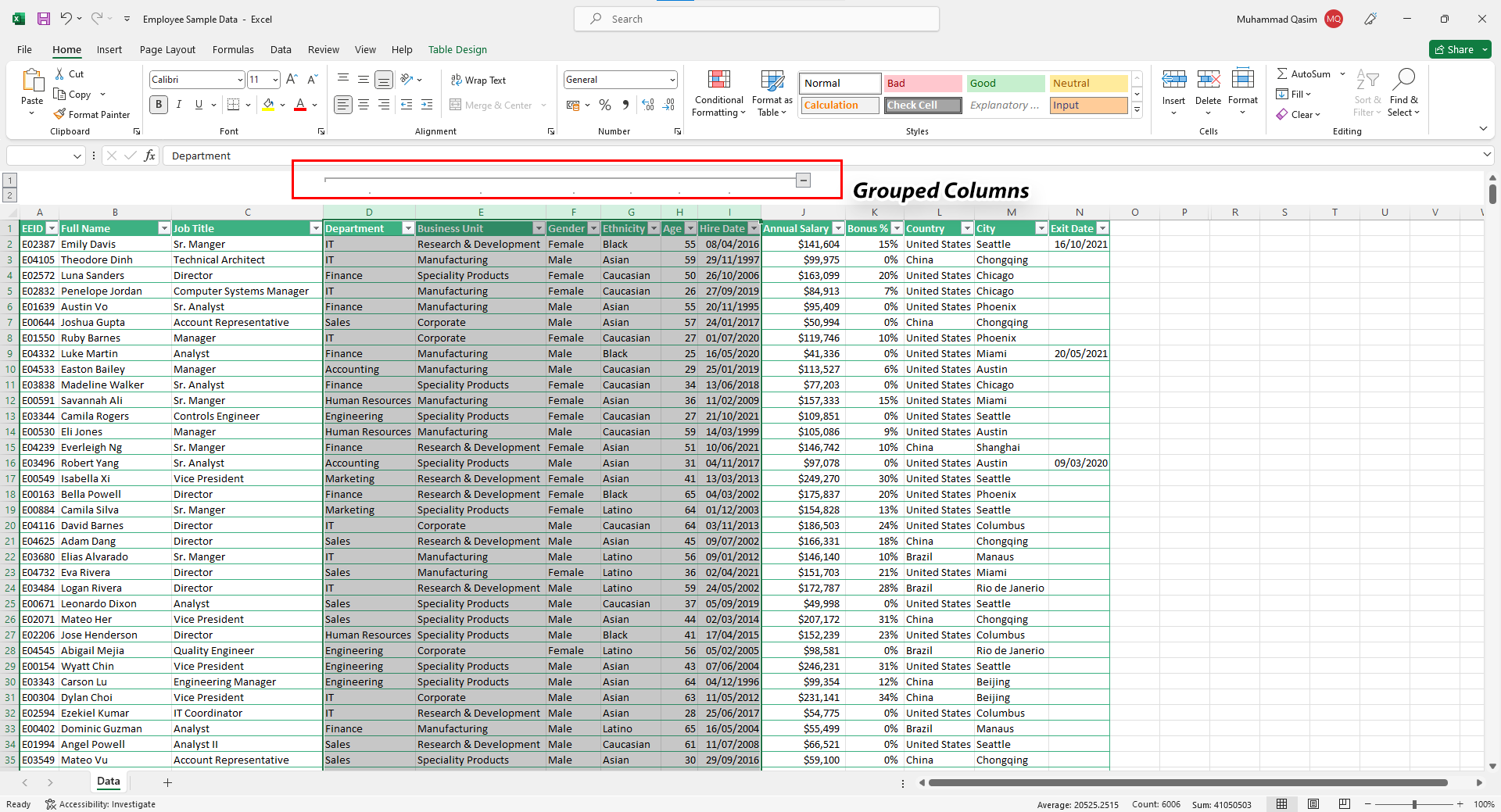
Grouped columns with expand/collapse buttons - Click the – button to collapse or + to expand.
5. Hiding Specific Cells
To hide individual cells (not entire columns):
- Select the cells, right-click, and choose Format Cells.
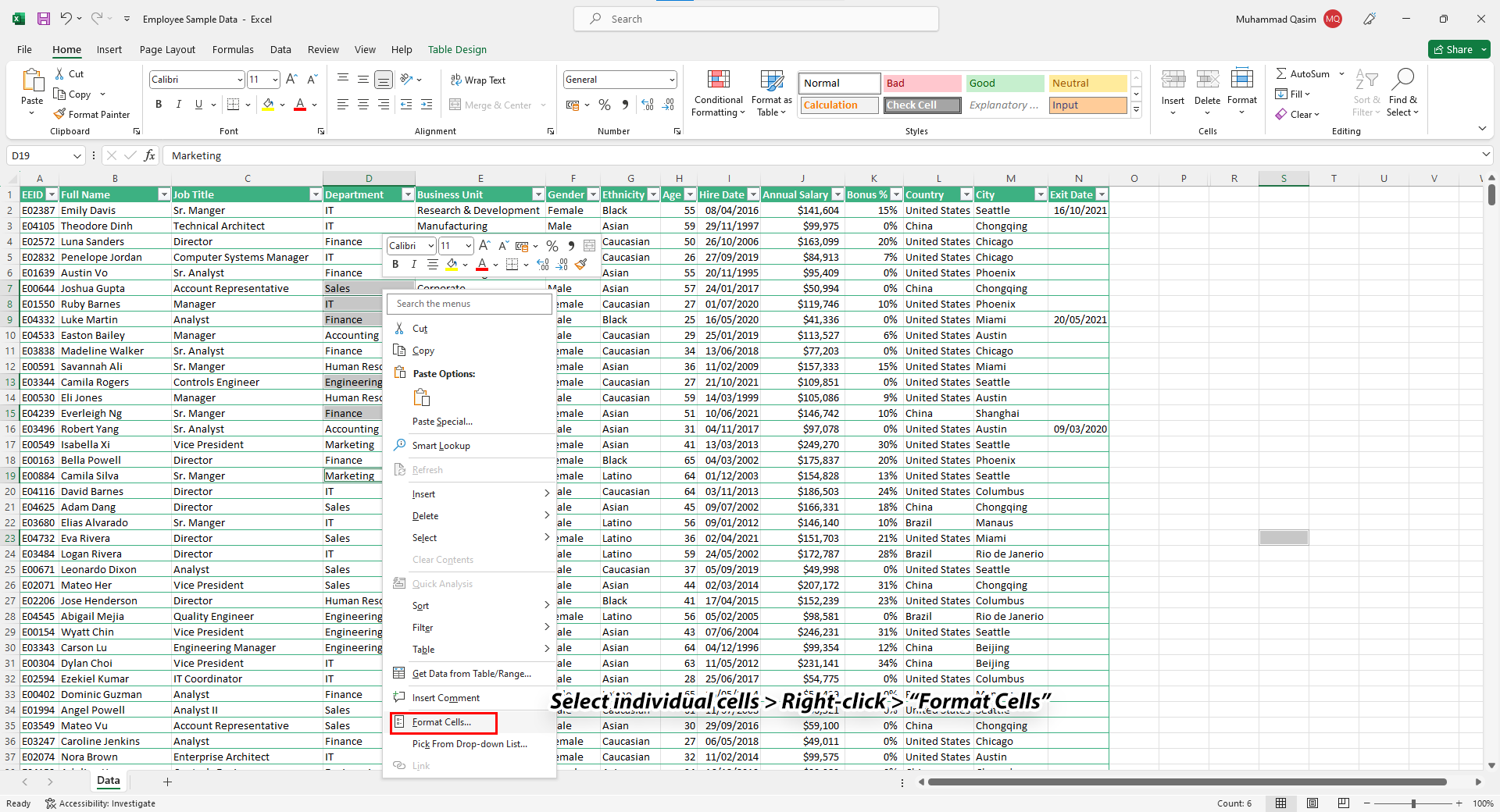
Formatting cells to hide content - Under Custom, type
;;;and click OK.
Using ;; to hide cell values
How to Unhide Hidden Columns
- Select the columns adjacent to the hidden ones (look for the double-line indicator).
- Right-click and choose Unhide.
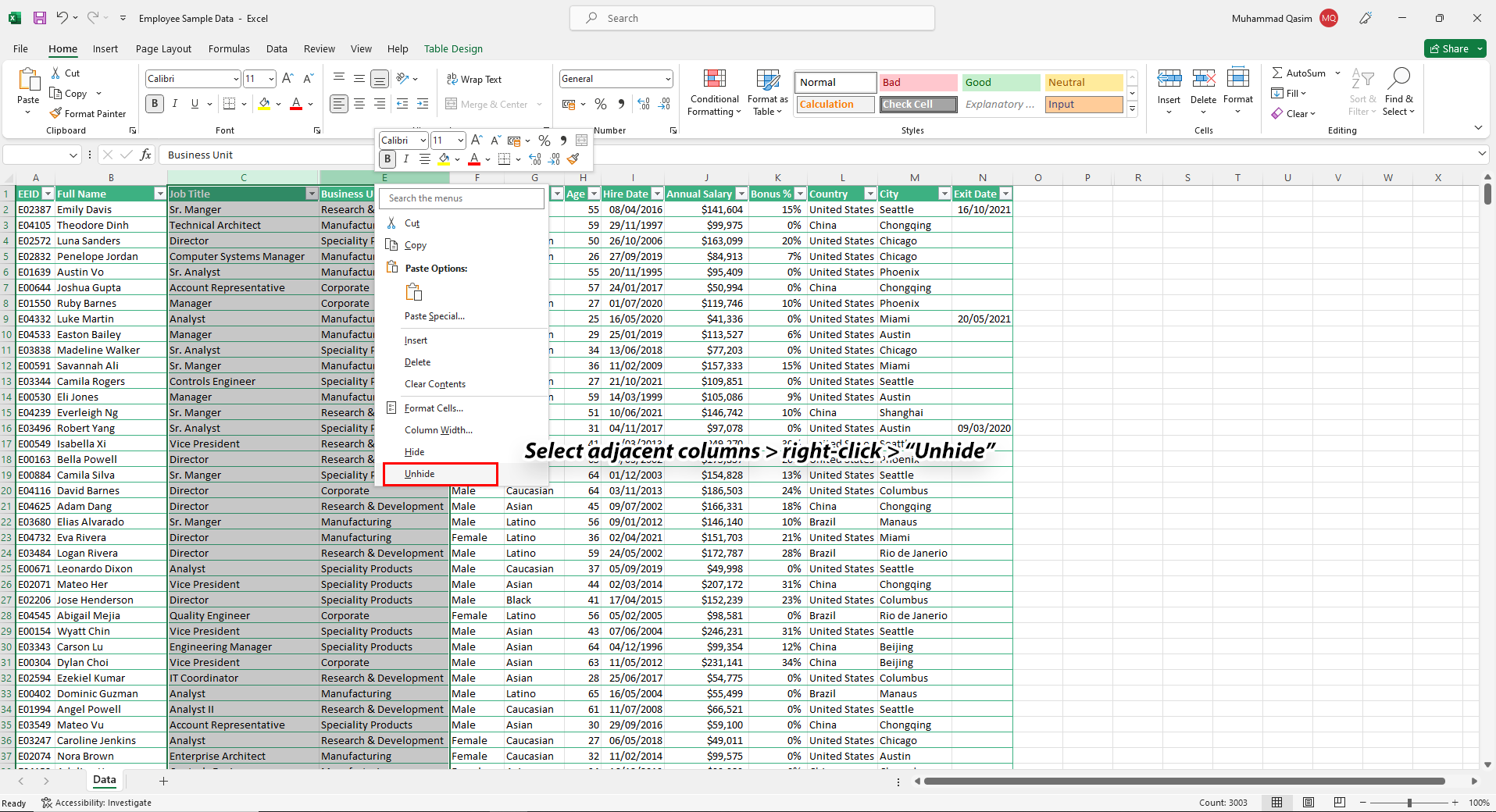
Restoring hidden columns
FAQs
No! Hidden columns are just invisible. Your data stays safe and can be unhidden anytime.
Use the right-click menu. It’s straightforward and requires no shortcuts or coding.
If “Unhide” is grayed out, your sheet might be protected. Go to Review → Unprotect Sheet and try again.
Large spreadsheets can slow down Excel. Close other programs to free up memory.
 Reviewed by
Reviewed by 




